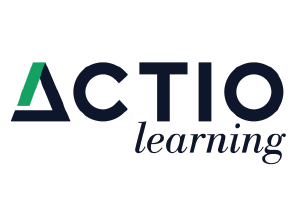The U.S. economy suffered an unprecedented and sudden shock in March 2020, unlike anything any of us had experienced in our lifetime. Likewise, the restarting of the economy this year will be unique, although it should not come as a shock, like the shutdown did. Because it should be more predictable, training and event planners can start making educated assumptions as they prepare to execute in-person training again.
With the entire economy having essentially paused, restarting it will likely cause capacity limits in many areas that are key to in-person training, such as hotels, flights, facilitators, conference venues and other areas with limited capacity — particularly premium locations and brands. Training professionals should start thinking about these limits and their training implications for the second half of 2021.
Back at the Starting Blocks
As a learning organization, the U.S. Army uses a four-phase operations process: plan, prepare, execute and assess. Most corporations have similar cyclical cycles, with multiple training programs in planning, preparation and execution mode at once. In previous years, corporations naturally maintained the cycle:

This year, however, will probably be different. Many companies are at the starting blocks now, in the planning stage, waiting for the “starter gun” to go off so they can jumpstart in-person training again. That starter gun will go off at different times for different companies based on their location, planning process and business performance, but they will share one thing in common: There could be severe capacity constraints as companies try to fill the second half of 2021 with two years’ worth of training demand.

Planning for the Surge
Once it is safe to start corporate travel again, companies will have over a year of pent-up demand to fill six months of hotel and conference capacity in the second half of 2021. After the hospitality industry’s worst 16-month period in history (March 2020 through June 2021), and the bankruptcies and closures that resulted, the number of available conference venues and guest rooms will likely have declined.
Some hospitality sites might remain open with limited capacity or services while reorganizing their business plan, while others might need to close entirely for a few years years and go through Chapter 13 bankruptcy proceedings. The early planners will be able to book the coveted spaces at the best rates and the highest-quality services during premium dates, leaving suboptimal dates and venues for those organizations that fail to anticipate the surge in demand.
As a result, learning and development (L&D) professionals might need to be more creative in the development of their training plans for 2021. They may need to consider alternate locations, such as college campuses or suburban venues. Interactive training options like experiential outdoor events might be more attractive for teams that have not seen each other in person for a while, while classroom training might be in lower demand.
Compounding the challenge, many venues might also face an increased demand from luxury personal travel during the second half of the year, which is when most annual corporate training occurs. The halt in corporate travel occurred simultaneously with the halt in the personal luxury travel market. The reopening of cruise ships, resorts and hotels will place further constraints on capacity as both corporations and leisure travelers compete for the same transportation, locations and dates.
The Timeline
When will companies be off to the races? It will probably differ by region and industry, among other factors. Hotels in Miami might be open for conferences first, while hotels in New York City might not. An additional consideration is when we will achieve “herd immunity.” Dr. Anthony Fauci, director of the National Institute of Allergy and Infectious Diseases, has offered varying opinions, saying that we could achieve herd immunity when 60% to more than 80% of the American population receives the COVID-19 vaccine. Fauci anticipates that the U.S. will likely reach herd immunity by the end of the second quarter of 2021. Indeed, a board member of Johnson & Johnson told CNBC that taking into account that company’s new vaccine as well as the Moderna and Pfizer vaccines, there will be enough COVID vaccines for the entire U.S. adult population by June.
With assumptions about herd immunity starting to help assuage health and safety concerns, planning teams can start to prepare for in-person events within reasonable parameters. Whether your organization plans events with clients, internal strategic meetings, team building events, leader development or even after-action reviews (AARs) to debrief on the COVID pandemic, there will be many reasons to schedule in-person events during 2021.
Chief executives always have competing priorities. This year, reoccupying offices will consume high levels of resources and funds. Companies that benefited from reduced travel and expenses in 2020 might be reluctant to see a sharp increase in corporate travel in the second half of 2021. However, the number of executives wanting to travel again will likely be significant.
Initial strategic team and corporate meetings in 2021 will need to be impactful, as organizations bring teams back together after rocky personal and professional experiences to reconnect and stimulate future business growth. Therefore, premium locations with services available for team building and recharging will likely be in the highest demand. It will not be enough to meet at the hotel down the street for the first meeting back together after COVID; many high-performing teams will want the location of that meeting to be impactful, meaningful and symbolic. There is a high likelihood that all premium locations sell out — and quickly — as the U.S. is closer and closer to being able to say that we have reached herd immunity.
Organizations should start planning events now if they want to book their preferred locations, flights, corporate partners, faculty and travel arrangements in 2021. Some planners will be ahead of the curve — but some will find themselves still at the starting line, even after the starter gun goes off.





